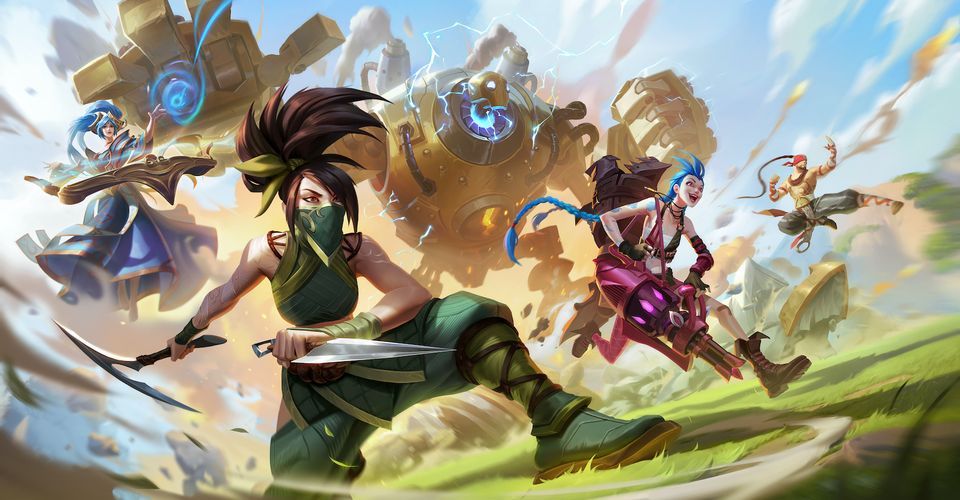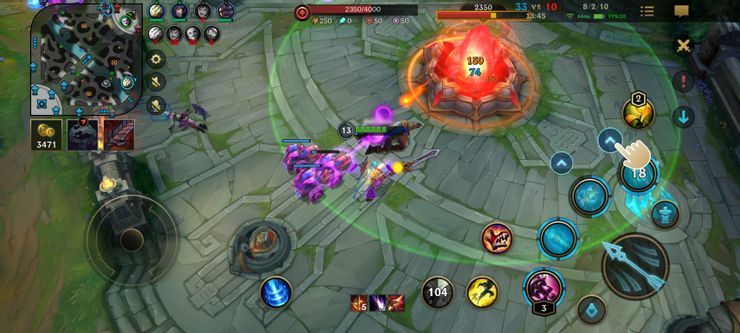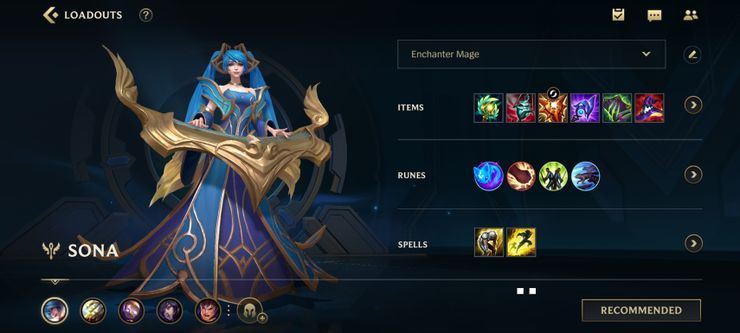I am but a filthy casual. If you’re a diamond League of Legends player with hundreds of hours and all 154 champions unlocked, you’re probably not particularly interested in what I have to say about the scaled-down mobile version of the game. But if you’re a League dabbler like myself, or someone that has ever fantasized about playing League for fun, let me tell you: Wild Rift isn’t some baby version of LoL, it’s a new and improved version of League. Wild Rift is League 2.0 and I’m already obsessed.
It may be convenient to think of Wild Rift as a simplified version of League, but practically all of the tuning, redesigns, and QoL changes made to Wild Rift just make the game better. If Riotreplaced the PC version of League with Wild Rift, I think the game would be healthier, happier, and way more accessible. The map changes — like the removal of the inhibitors and towers around each Nexus, healing plants scattered around the map, and the new ward zones — keep games fast-paced and remove some of the back-and-forth that often leads to one team securing an insurmountable advantage. Level caps at 15 now instead of 18, which feels considerably faster than it sounds on paper. And the overall distance across the map has been reduced, making it much easier to get around.
The total effect of all these changes is matches that last 15-20 minutes rather than 25-30. It can’t be overstated how much better short League games are. While it may be true that each play is more meaningful and each death is more impactful when the games are shorter, I can’t help but feel like this version of League respects my time so much more. Not only are rounds more exciting this way, but there’s no chance that one team is going to steamroll the other for 20 minutes. I have yet to play a game that felt like a losing one for the entire duration, and even if it did, I’m perfectly content dealing with a one-sided game when I know it’s only going to take 15 minutes.
There are so many quality of life changes that make Wild Rift the superior LoL for me. One of the biggest reasons that I avoid playing League even casually is the complexity of items and runes. It’s incredibly important to build efficiently and reactively in League, and if you only play the game every so often it’s impossible to learn how to manage items efficiently. Wild Rift completely removes the friction of items by offering presets for every character. There are multiple recommended preset builds for each character, as well as a customizer that lets you get nitty gritty with your loadouts once you get the hang of things. For an ADC like Ashe, you can choose either an AoE build or a Crit damage build to start. In the game, you’ll only ever be presented with the next two items or upgrades you can currently afford when you visit the fountain. You can still open the store if there’s a specific item you know that you want, but this system makes it so easy to quickly grab the next upgrade and get back into the battle without needing to navigate menus or worry that you’re buying the wrong thing.
The most important change has to do with the ease of communication. Instead of opening up a text box to type to (and flame) your teammates, Wild Rift lets you load in a set of premade lines that you can send to your teammates from a hotbar. Phrases like “enemy missing,” “focus on objectives,” and “Can I take the buff?” help players quickly communicate with their teammates. What’s more, there are three very simple ping icons on the top right of the screen that you can use by simply touching, which automatically opens up the map, and then dragging your finger to where you want to ping and letting go. You can still use voice chat and the normal chat box to talk to your teammates, but communicating in Wild Rift is so quick and easy that I have to imagine it’s going to really cut back on the toxicity that typically plagues normal League games.
It’s not entirely an upgrade though, and the mobile controls do offer some limitations. The screen is fairly cluttered with abilities, spells, pings, the map, and other controls, and it can be easy to get lost in the action. Navigating the map is a major challenge, as you can only rely on touching a general area and then dragging your finger around to try to find the enemies. I’ve been playing on a 6.3-inch Pixel 4 XL, so I can only assume that people using smaller phones are going to have even more trouble.
That being said, the controls and targeting are really snappy, and there are a lot of options and fine-tuning that can help you find a control scheme that feels right for you. Wild Rift is never going to be able to replicate the precision and speed of mouse and keyboard play, but it's a hell of a lot closer than I expected it to be, and most importantly, it’s a lot of fun.
There’s also the problem of unlocking champions. While the game offers a path for earning a nice handful of characters through progression, there are 61 characters at launch and two more coming each month. If you’ve been collecting champions in LoL over the years, you’re essentially starting over (minus some forthcoming “Rift-to-Rift” rewards). At around $7 each, hardcore League fans aren’t coming to be too excited about starting over in Wild Rift.
I have no doubt that more experienced League players will be able to come up with plenty of reasons for why Wild Rift is inferior to the classic, but as someone that has always felt intimidated by LoL, Wild Rift is incredibly attractive. There’s still a ton to learn, and at its core, it’s the same game it’s always been, but for the first time, I feel like I’m ready to jump into League of Legends with both feet.



